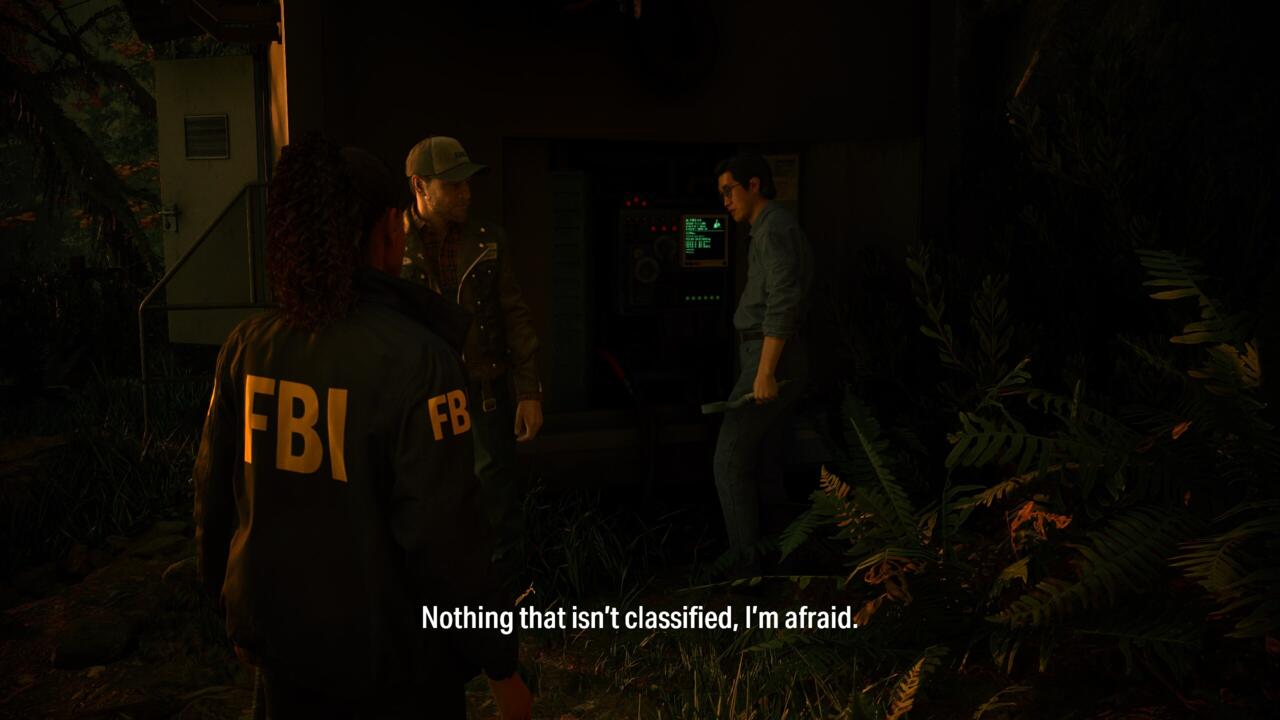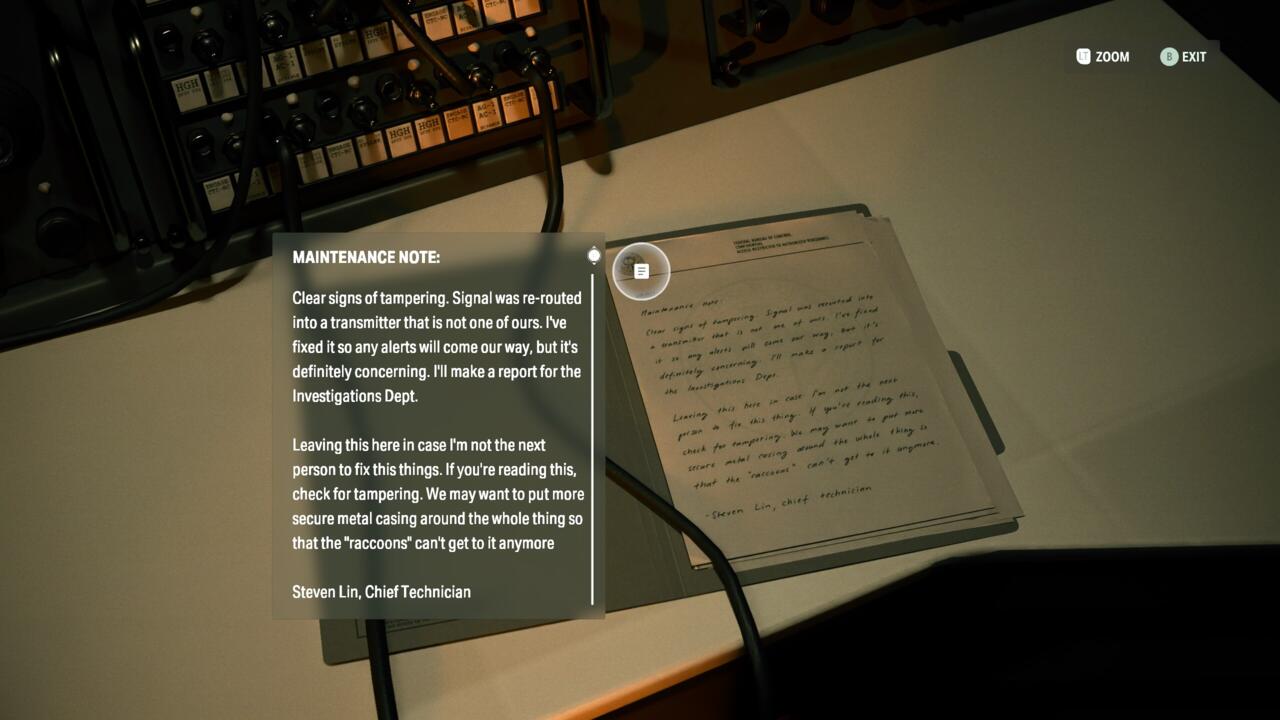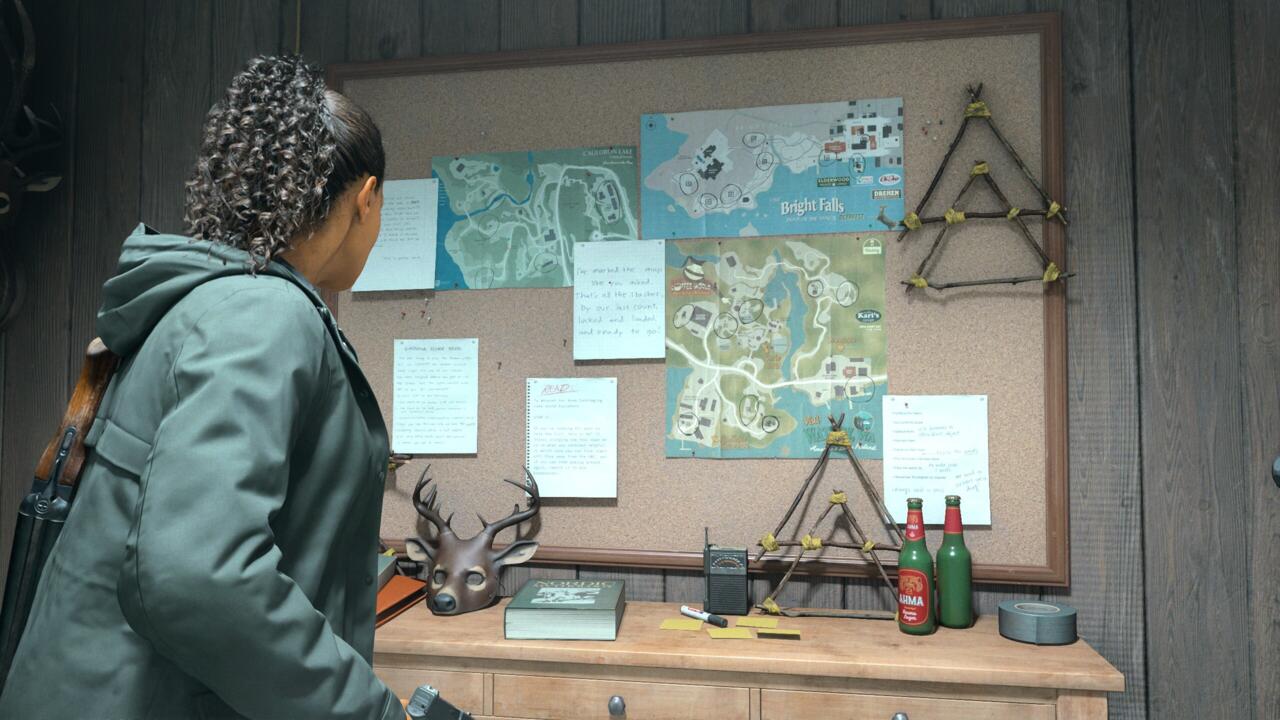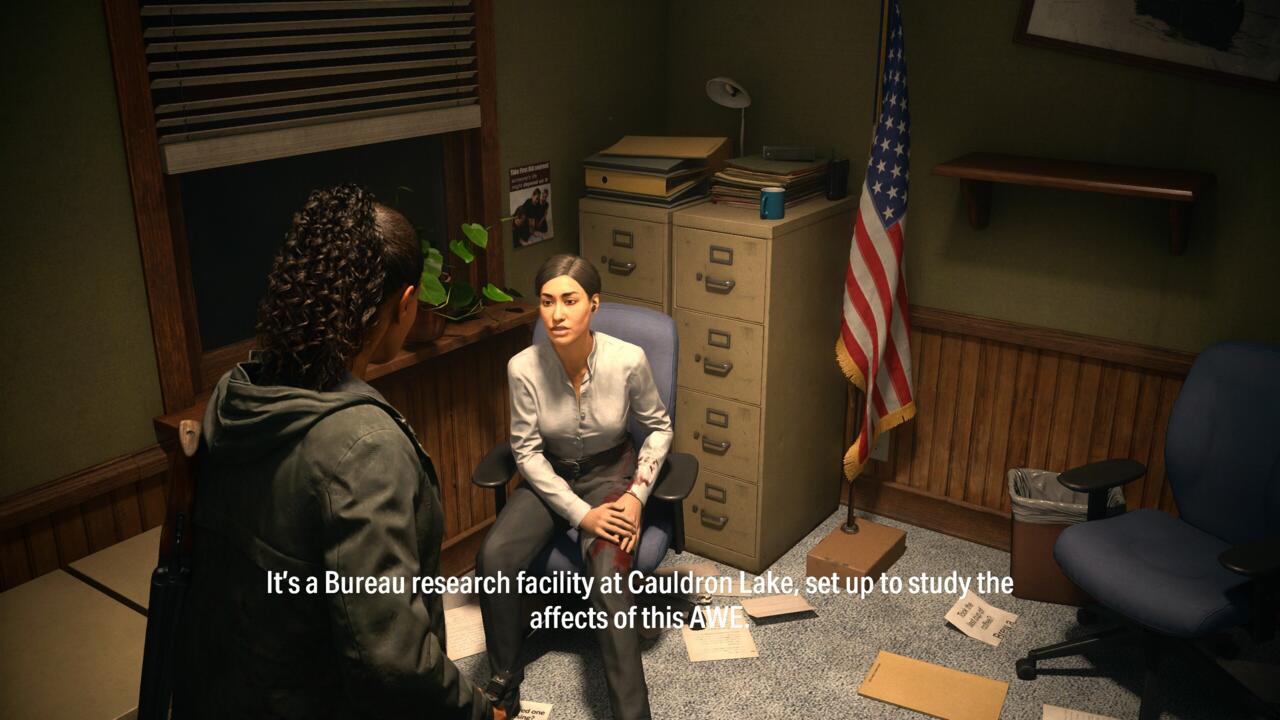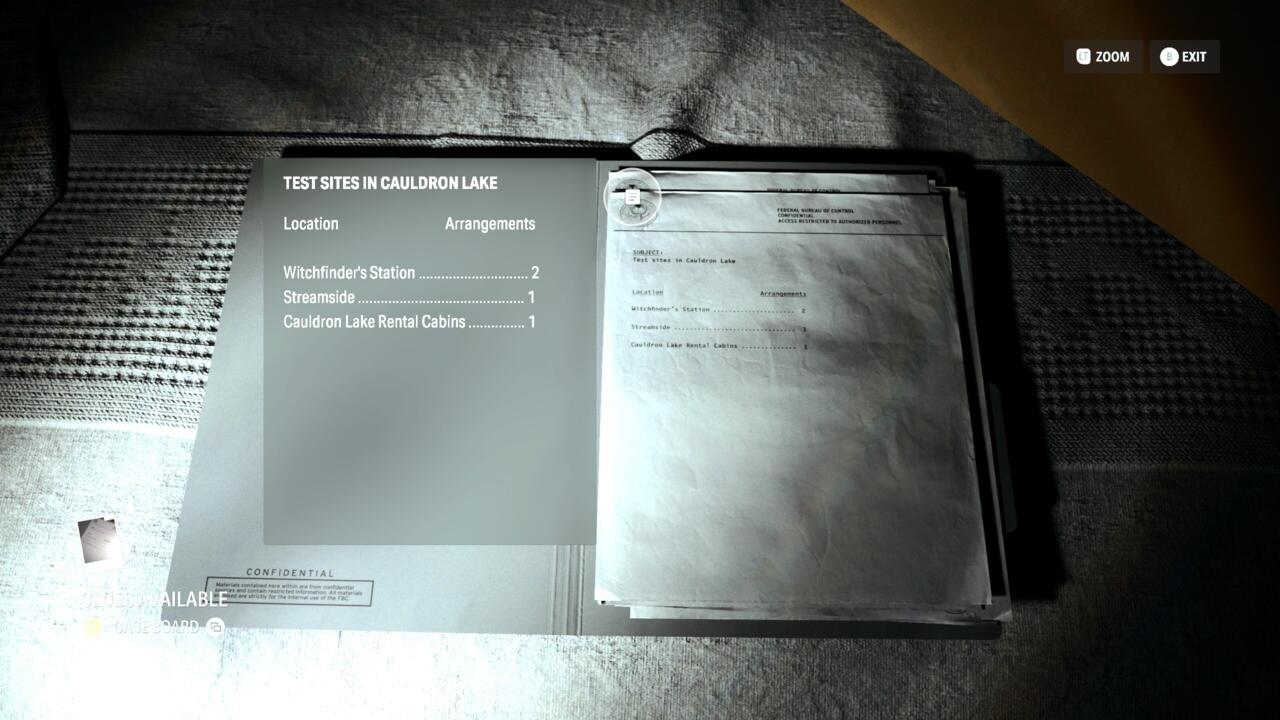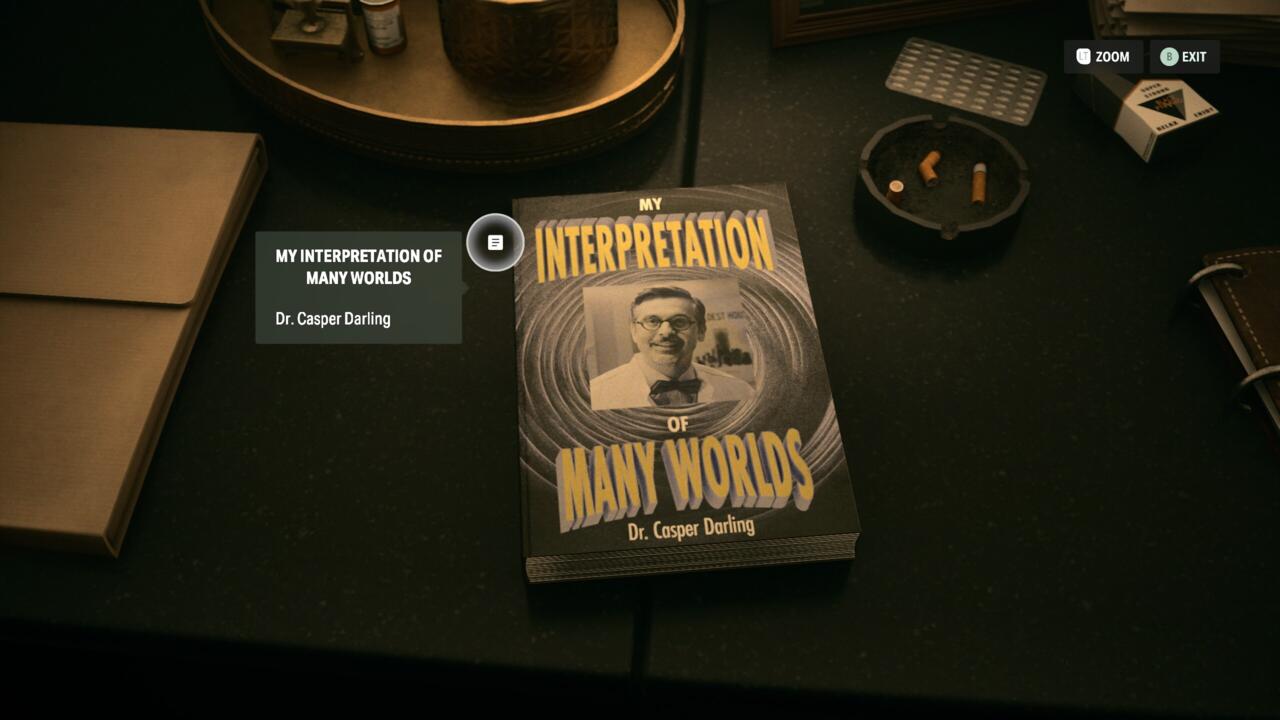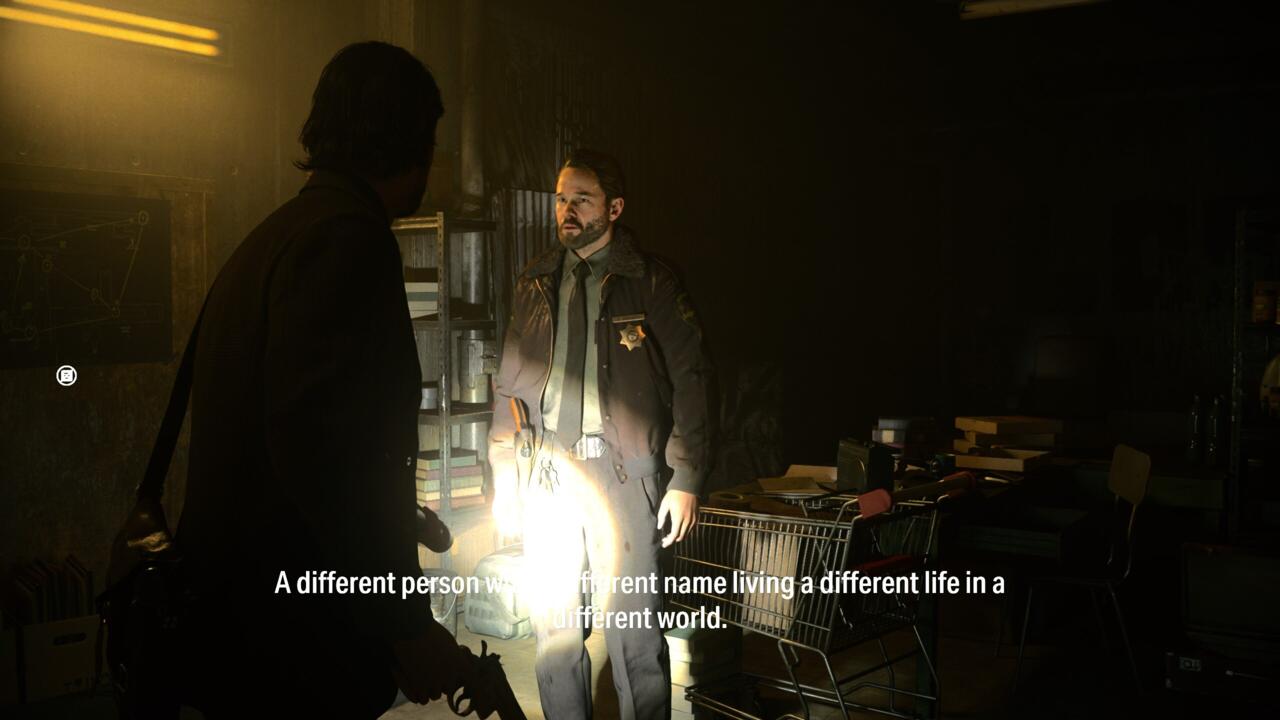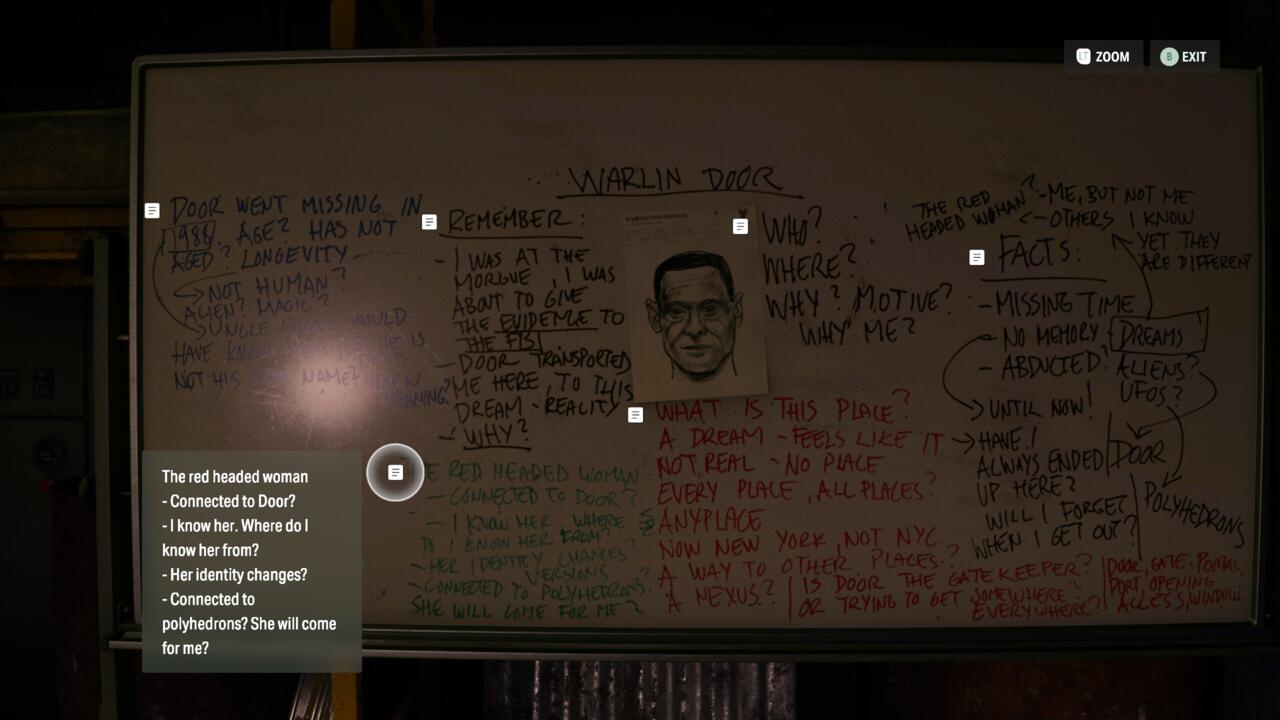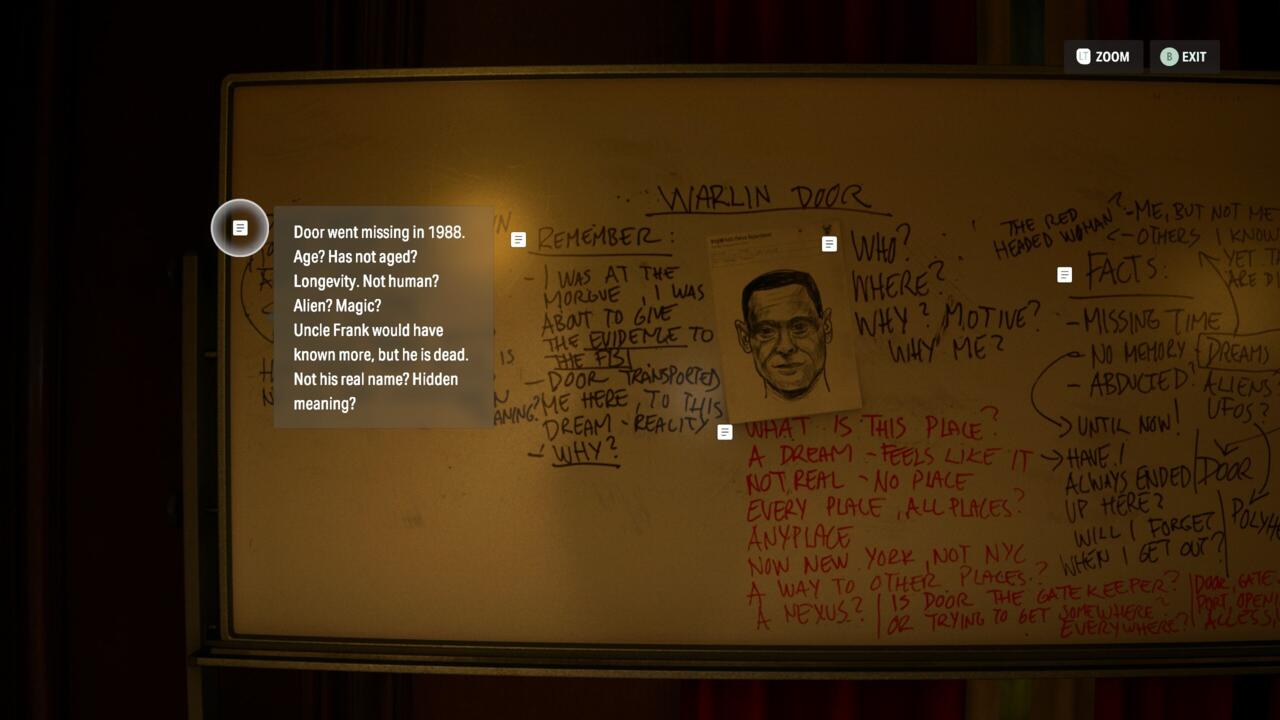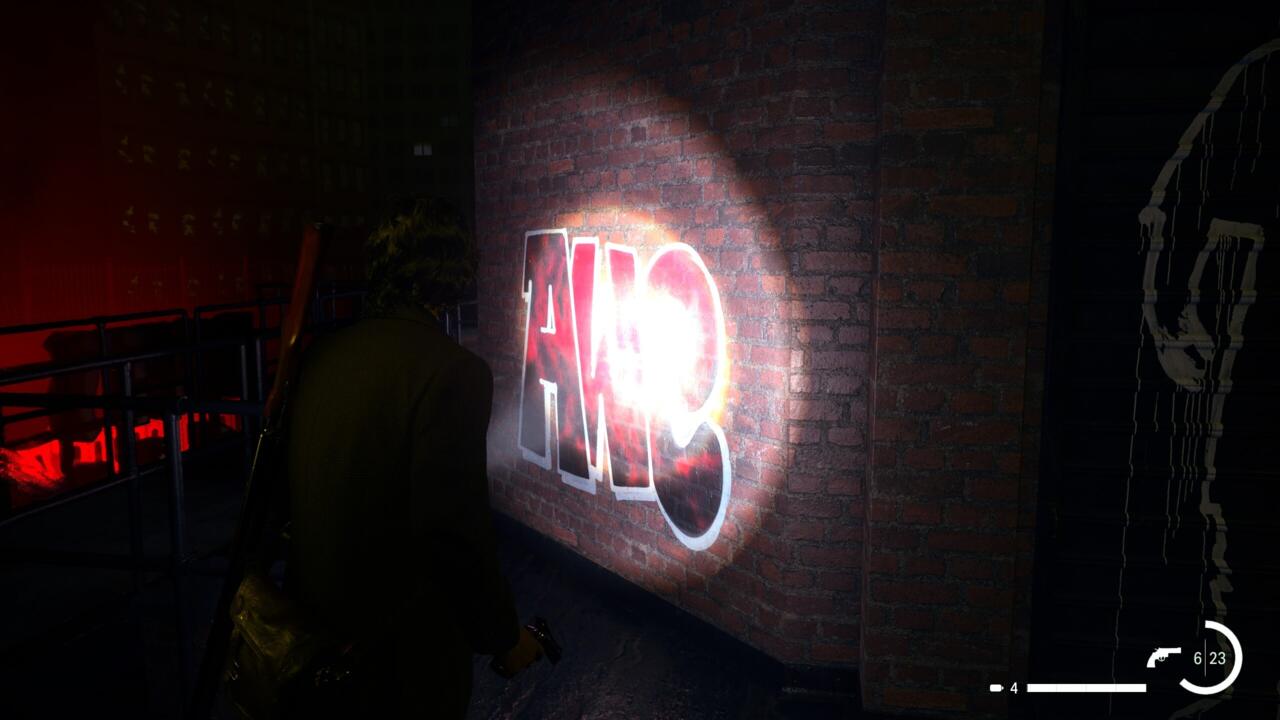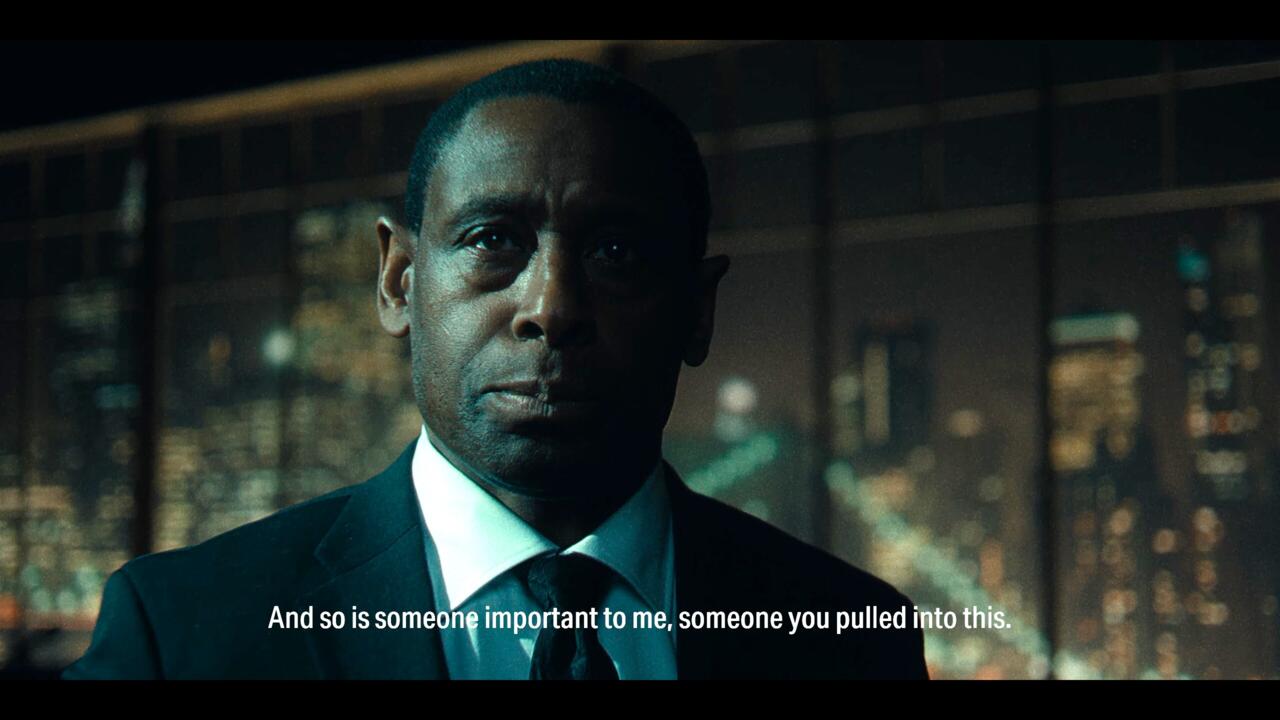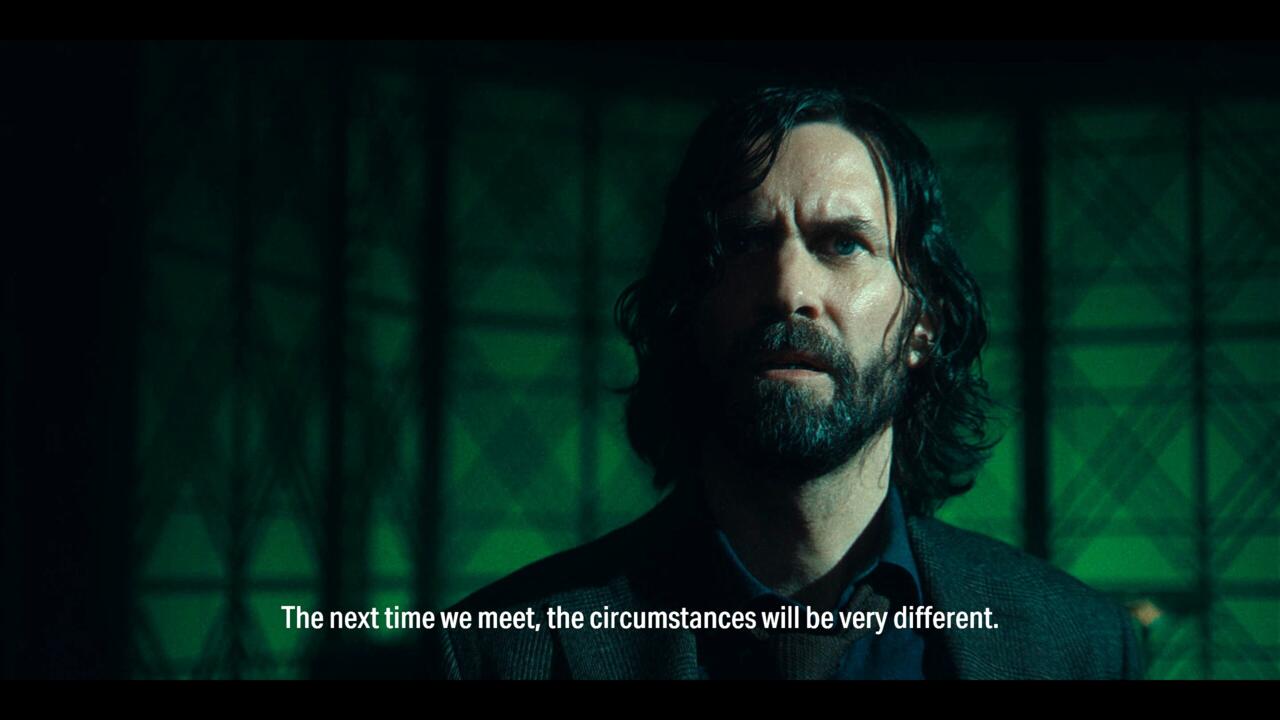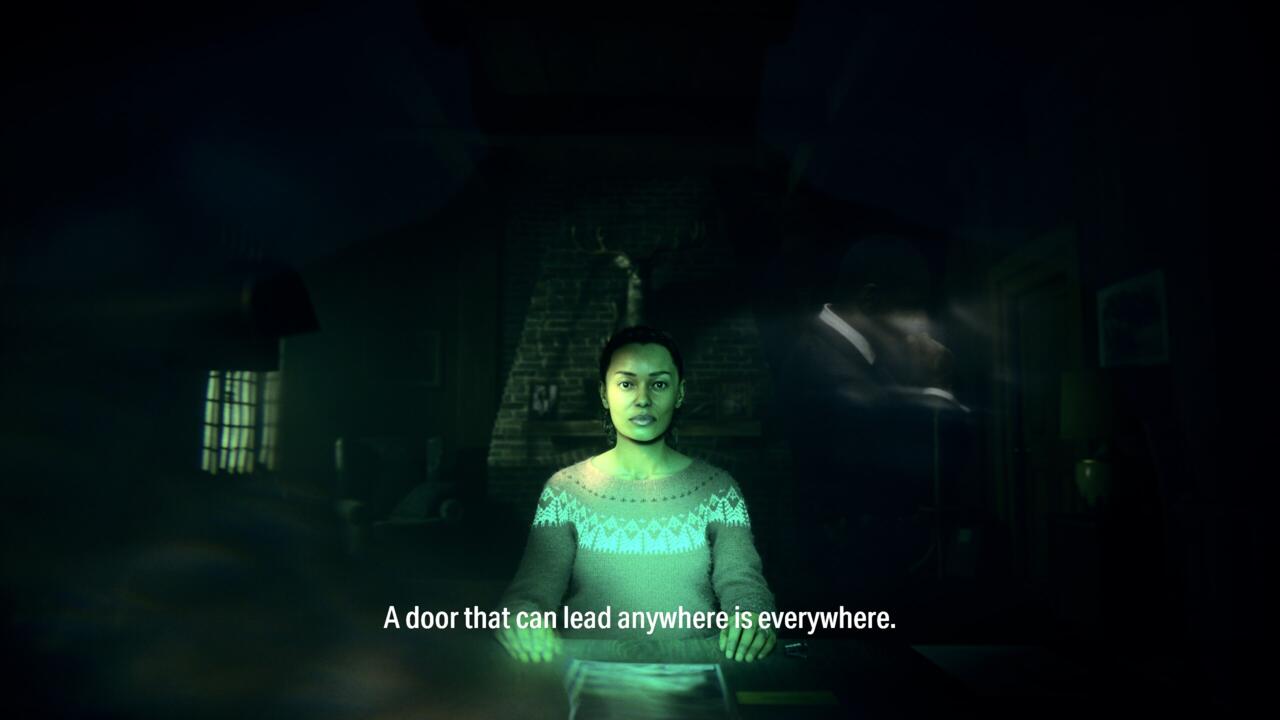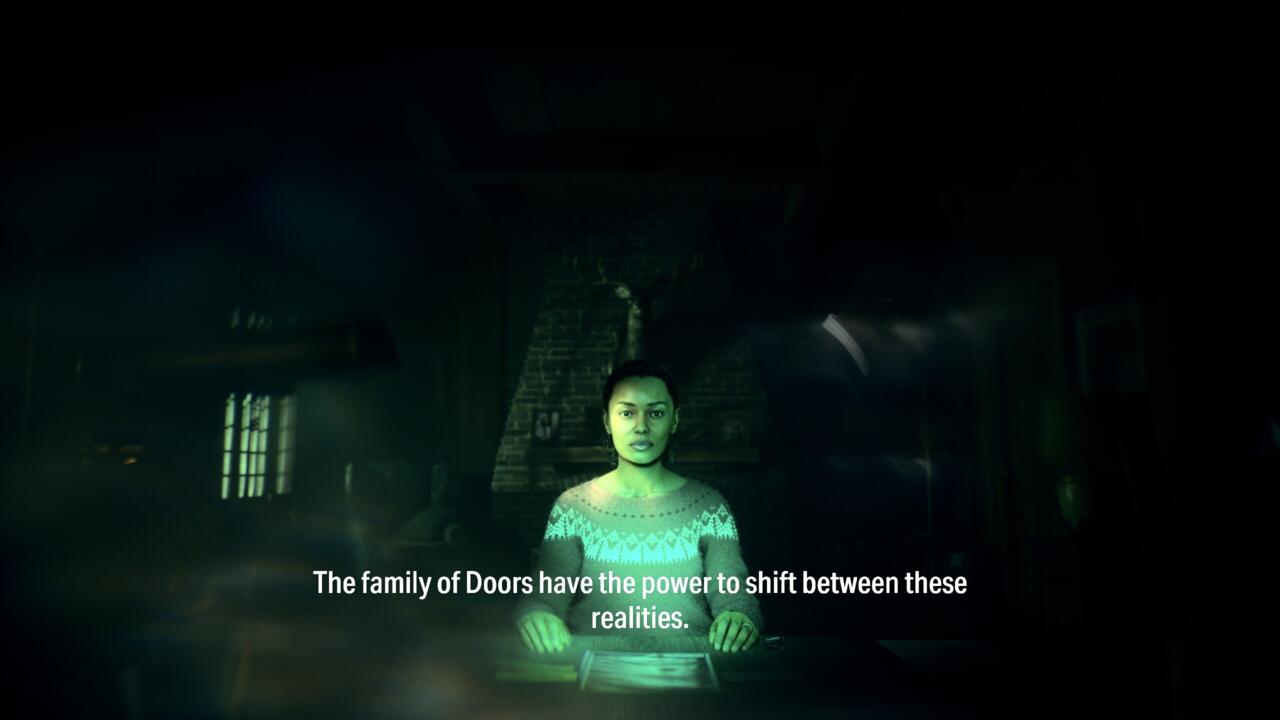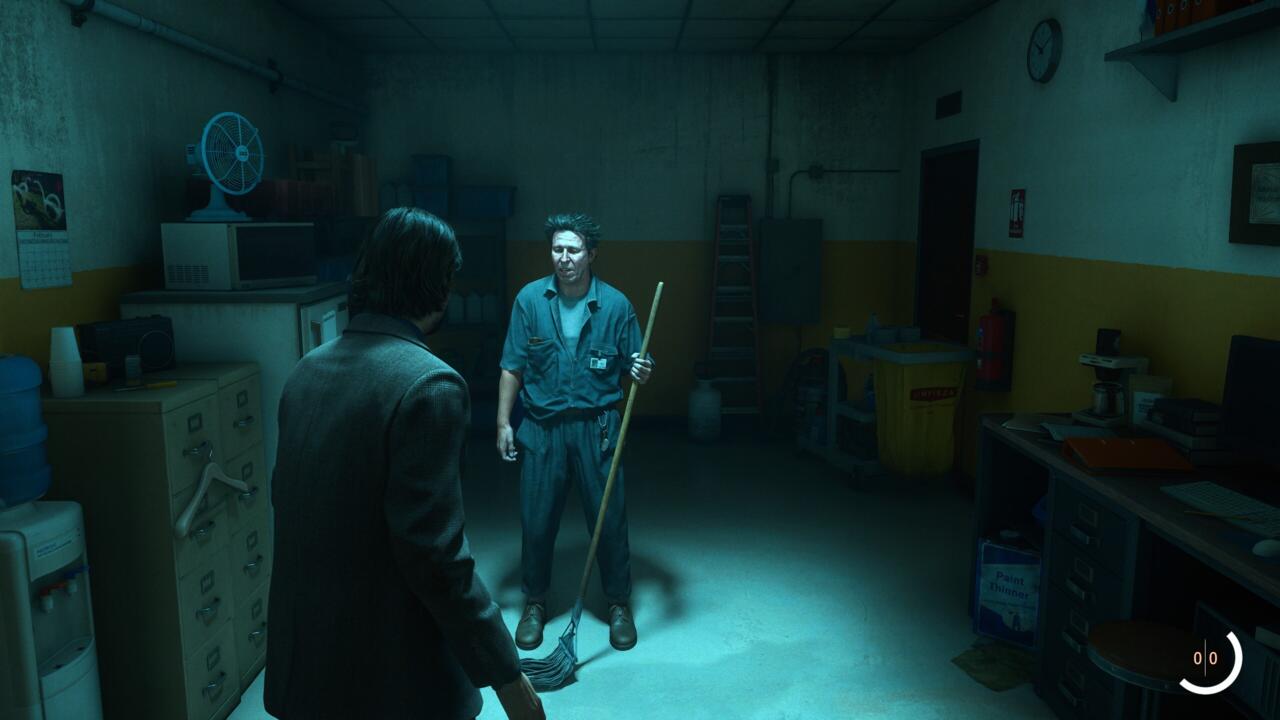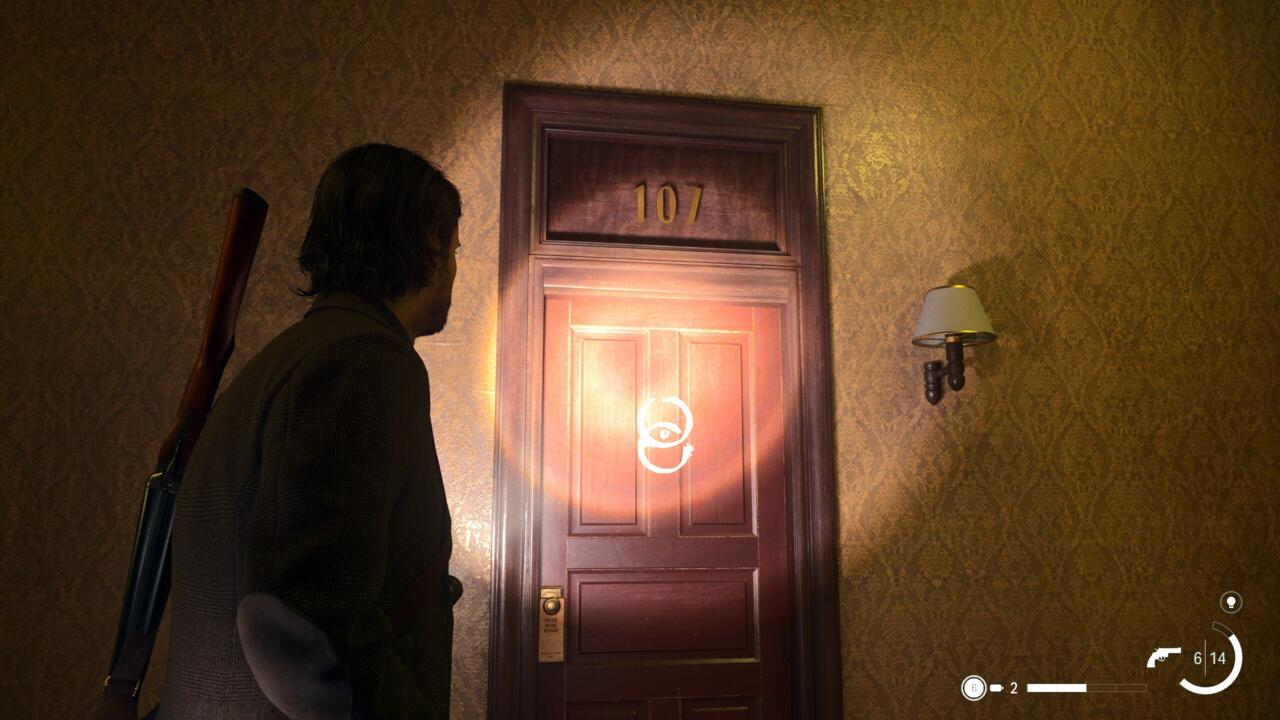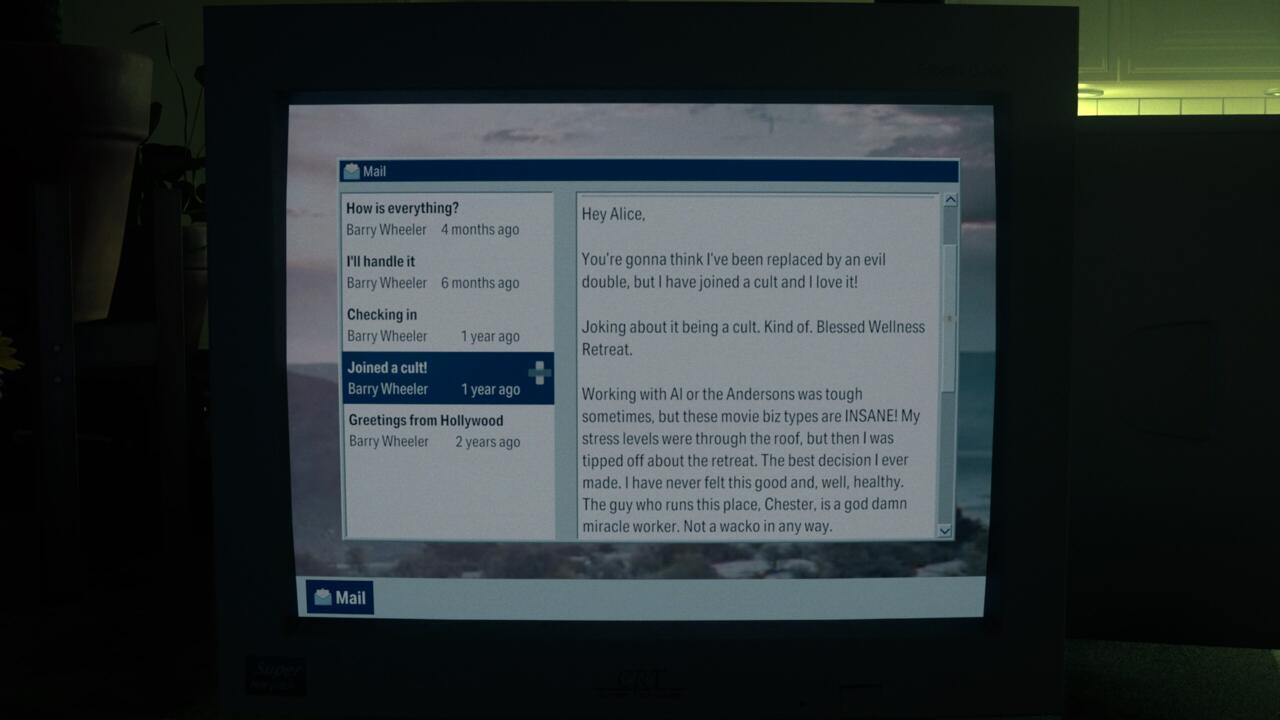Everything Alan Wake 2 Reveals About The Remedy Connected Universe
GameSpot may receive revenue from affiliate and advertising partnerships for sharing this content and from purchases through links.
While Alan Wake 2 is already a mind-bending game in its own right, it's made even more complex given how the series fits into the Remedy Connected Universe (RCU), which is the official name the Finnish studio gives to its connected story world that so far includes Alan Wake, Control, and Alan Wake 2. With so much more learned about the RCU through the events of Alan Wake 2, we sought to round up every new detail and put them in one place for future reference. It stands to reason that Remedy will be building on its intertwined world for years to come, so consider this a bookmark-worthy reference guide for Control 2 or other connected games in the future.
As ever, Max Payne and Quantum Break are not truly a part of the RCU, though given Remedy's penchant for "echoes," slight nods to those series told through reshaped characters and related themes, we've included those nods here too. Plus, you never know, Remedy could possibly acquire those rights one day like they did with Alan Wake a few years back. In the meantime, here's everything new Alan Wake 2 teaches us about the Remedy Connected Universe.
Just in case it's not obvious, consider this your spoiler warning!
The Koskela brothers are poking around the Federal Bureau of Control
In an early scene at Cauldron Lake, we meet our first Federal Bureau of Control (FBC) employee in Bright Falls--though not the last. Steven Lin, chief technician for the FBC, is found repairing a monitoring station's electrical innards which he says checks the air for toxicity levels--that's certainly not true, as you can later find out for yourself by reading a sheet left inside the room. Nonetheless, Ilmo Koskela is there to serve as his local tour guide of a sort, but what we don't know then--but find out later, as mentioned in this article further down--is that Ilmo and the Cult of the Tree are very interested in the FBC and seem to view themselves as serving a somewhat similar role as defenders protecting the natural world from Altered World oddities.
Seen here: Steven Lin's memo that reveals the monitoring station does more than measure air quality
The Cult was inspired by the FBC to use the triangle symbols
In the middle of Saga's campaign, an email can be read that directly links the Cult of the Tree's symbol to the FBC. It's revealed that the Koskela brothers borrowed the symbol to create the language with which they clue in other defenders of Cauldron Lake to the whereabouts of equipment stashes and their complicated unlocking procedures.
I recall personally being thrown off by the many different ways the overlapping triangles were displayed in early trailers and footage of the game, and I tried to discern some meaning in those different displays for months. As it turns out, they all basically mean the same thing: The Koskelas think the FBC is pretty neat, and want to protect their home turf the way the FBC sets out to contain Altered World Events and Objects of Power itself.
The Lake House DLC will heavily revolve around the FBC
Just as Control's second DLC was heavy on the Alan Wake connections, it seems Alan Wake 2's second DLC, "Lake House," will largely deal with the FBC. That's because, throughout the story of Alan Wake 2, we learn of a locked Lake House area that is basically the on-site Cauldron Lake emergency response building, like a fire station in a city. However, the team stationed there had gone dark recently, prompting the FBC to send in backup in the form of Agent Kiran Estevez, who arrives as all hell is breaking loose regarding Wake himself anyway.
By the time the game ends, the Lake House is still dark and unresponsive, which suggests this is a mystery we'll further explore in the DLC chapter. The playable character hasn't been revealed, but it would make sense for it to involve Saga working with Estevez to get the Lake House back to normal--if they can.
The FBC was conducting other tests around Cauldron Lake
It's also revealed that the bizarre nursery rhymes found around town are actually FBC experiments meant to test the abilities and reach of Cauldron Lake's paranatural properties. How it worked is that an agent would set up a poem telling a story using physical dolls in the world, then observe how those stories might take shape in the real world. In gameplay terms, this serves the advantageous function of equipping Saga with different buffs via charms she finds for each completed nursery rhyme, but like all collectibles in Alan Wake 2, these puzzles have narrative implications too.
The strangest part, however, is only revealed if you complete all nursery rhymes. You'll eventually make contact with someone who says he was conducting these experiments to try and open a threshold to trap you in the Dark Place. Over a two-way radio, he chastises you for messing with his experiments despite not understanding them. However, he seems to make a miscalculation himself, as he is then heard seemingly falling into the Dark Place himself, much to his horror. It doesn't seem like official FBC business, so it's unclear if he went rogue or had other motivations we never get to learn before he's whisked away into darkness.
The RCU is starting to take shape as a multiverse
After teasing multiverse-type story threads for years, it seems like Alan Wake 2 is written in such a way that more directly confirms it, while still not totally explaining it. Early on in the Alan campaign, you can find a book from Control's Dr. Darling in which he seems to write about his views on the Many Worlds Interpretation, or the idea that basically an endless number of alternate realities may co-exist.
The RCU explores this stuff in a number of ways, like how Alan receives phone calls in the Dark Place that seem to occur out of his own timeline, or how the FBC's whole purpose is to research and contain "Altered World Events." It may be that each Altered World Event creates a pocket of spacetime in which parallel worlds bleed into each other, or are at risk of doing so, at least. If the FBC understood this, their mission would seem to be a noble one. This would also help explain things like parautilitarians--people gifted with abilities seemingly from alternate worlds, Objects of Power--inanimate objects imbued with some magic-like properties, and Places of Power--physical locations where all these weirdnesses seem more prone to occurring, like Cauldron Lake.
As part of such a reading of the story world, it could even be that the Dark Place isn't so much a Silent Hill-like metaphysical hell for any who cross its threshold, but rather just one of the more tragic worlds to find yourself living in.
Tim Breaker might be a time breaker
As Alan explores the Dark Place, he repeatedly bumps into Tim Breaker, acting sheriff in Bright Falls and cousin to Sarah Breaker--who, by the way, now works "for the Feds," which I take to mean the FBC, just like her dad Frank used to. Tim is really going through a lot in this game. He was plucked out of Bright Falls and dropped into the Dark Place for reasons he can't discern. He only intuits that the enigmatic Mr. Door had something to do with it. Tim then spends the rest of the game researching Door, giving RCU-obsessed fans perhaps the game's best parts. His frenzied-looking whiteboard notes are a forum poster's dream of half-completed theories, teases, and callbacks.
He also mentions he feels like he recalls having lived a different life as a different person--a nod to Quantum Break in which the same actor, Shawn Ashmore, plays protagonist Jack Joyce, alongside Courtney Hope's character, Beth Wilder. This is important because one late-game note left by Breaker suggests he knows "the red-headed woman" from somewhere, but he can't recall where. Remedy fans may think they know where.
Let's dive deeper into his notes below.
Seen here: Breaker stumped by where he knows "the red-headed woman" from
Mr. Door notes and theories
If you come to this article with some RCU knowledge already in your head, then you're likely aware of the now-popular theory that Mr. Door and Quantum Break's Martin Hatch are, essentially, the same character. This link is made in a legally distinct manner, which a multiverse rather comfortably allows for anyway, but the theory, which has existed since 2019 when Mr. Door was first mentioned by Dylan Faden in Control, is further backed by new information in Alan Wake 2.
For one, we learn Door's full name is Warlin Door, which is somewhat humorously the Wario-ization (thanks to Phil Hornshaw for this phrasing) of a name like Martin Hatch--seriously, Warlin? Secondly, we knew Hatch, played by the late, great Lance Reddick, to be a "shifter," a being that can travel between worlds, existing out of spacetime as we tend to understand it. This appears to be within Door's range of abilities, as noted by Breaker, who comments on someone matching Door's description having gone missing in 1988, which suggests Door has somehow resisted aging.
According to Breaker's notes, he ponders whether Door is a gatekeeper of sorts or rather a time-traveler trying to make it somewhere specific, though Breaker has no idea where. It seems to be implied later that the former is more likely true, which we'll get to a little later on in this article.
It's also worth noting that Mr. Door's actor, David Harewood, has a passing resemblance, including vocally, to Lance Reddick. So if Door is Hatch, and Door is a "shifter," what is the origin and nature of his abilities? How does a shifter factor into the greater universe Remedy has set up? Are they--assuming there's more than one--the big bads, ambivalent metahumans, aliens with an agenda of their own? There are still so many questions that seem ripe to explore in RCU-involved games to come.
As an aside, Breaker and Door, at different points, suggest that Mr. Door was once the host of Night Springs. But we learned in Control that the FBC was producing Night Springs as a way to test-run paranatural truths on the general public, similar to how some folks believe governments slowly leak evidence of extraterrestrials to get the general populace acquainted with the existence of aliens. So Door's apparent involvement in Night Springs feels odd. Was he never truly the real-world host? Was he the host up to a point, such as before the FBC took over the show? The first DLC will further explore Night Springs, so we may soon get some clarity here.
AWE graffiti
This isn't nearly as vital as perhaps anything else on this list, but if you're looking for any more slight nods to Quantum Break, both Alan Wake 2 and Quantum Break include "AWE" graffiti, which stands for Altered World Event. This is a fun Easter egg, I think, because it's a good reminder that even back during Quantum Break, the idea of a Remedy Connected Universe was brewing inside Remedy--and of course it was, since that game has a few can't-miss nods to Alan Wake itself, including another whiteboard full of obsessive theories.
Mr. Door is Saga's father
This one is subtler than many other reveals on this list, even as it's referred to multiple times during the game. Here are some facts:
- Saga doesn't remember her dad.
- Saga's actor, Melanie Liburd, was born in 1987. Therefore, it stands to reason Saga Anderson was born in or around 1987 too, if Liburd is portraying a character the same age as herself.
- According to Breaker's research, someone resembling Mr. Door disappeared in 1988.
- Mr. Door suggests to Alan that Alan has pulled someone important to Door into his horror story.
- When in the Mind Place, Saga pauses to wonder about her father and Tor tells her "some doors" are best left closed, which could be the game's writers' way--if not exactly Tor's way--of using a pun to hint at this truth.
Naturally, this leads to several new questions. If Mr. Door is some kind of higher being--a shifter--what does that mean for Saga? Was he not always like this? It seems, given that Tor and Odin also share Saga's ability to enter an almost omniscient Mind Place, that Saga gets these abilities from her mom's side of the family, not her father's. So was Mr. Door once a regular person who really did go missing in 1988 and somehow ended up as the powerful Mr. Door? Again, Door proves to be perhaps the most burning question in all of the RCU.
Seen here: Off-screen, Mr. Door suggests to Alan that the next time they meet, he won't be so patient with Alan
Seen here: Saga trying to understand Door's place in the story, though never realizing he is her own dad
Seen here: Saga suggests there are more than one Door. But are they all the same in physical likeness?
Ahti is... actually, what more did we learn about Ahti?
Ahti was teased as heading to the Pacific Northwest at the end of Control, when you find a postcard that depicts him in Watery, Washington. So his appearances all over Alan Wake 2 were to be expected, and yet, it's still hard to explain what else we can make of him in his second game appearance. He seems important, that's for sure, as he tends to appear in both the Dark Place and the "normal" world at will, as though he can freely move between them. He also seems to be a gatekeeper of sorts, both physically, as he can open doors others cannot, and figuratively, as he seems to possess a lot of knowledge about the nature of the RCU's story universe. He appears in Thomas Zane/Seine's lost film, Nightless Night, too, which seems significant. He also routinely speaks in esoteric idioms and metaphors, some of them seeming to be of Finnish origin--not to mention all the Finnish he squeezes into his sentences alongside English, all of which is to say it's easy to lose track of what the heck he is saying anytime he speaks.
To put it bluntly, Ahti seems special, perhaps more than human, even as his current role mostly gives me an admittedly enjoyable lore headache. One thing I do feel somewhat confident about is that his depiction as a janitor is significant. He is a custodian of the multiverse, that's how I see it. More than just mopping floors, he's often present at major moments acting like a well-intentioned guide or perhaps a threshold guardian--there's the monomyth again--ensuring the universe is as neat and organized as it can be. If you have your own theories on this janitor of a sort, please do let me know. I'd love to better understand him.
The Oceanview is reborn
An obvious connection to Control is the Oceanview Hotel, formerly the Oceanview Motel in 2019's game. If you've been following along, you know that a popular theory suggests the Oceanview (in any form) to be a transit junction spanning different Remedy-connected worlds. We know from both in-story clues and Control's game files that the symbols on each door seem to correlate to different RCU projects, such as the triangle being Control, the spiral being Alan Wake--which is further evidenced in Alan Wake 2--and so on.
With what we know about Mr. Door--or what we think we know, anyway--the Oceanview seems to make a bit more sense now. If Mr. Door is able to travel through all universes at will, is he able to open all these locked doors? Alan and Jesse cannot, best we can tell, but perhaps Mr. Door can. My thinking is the Oceanview appears in all universes and is like a train station, with all kinds of tracks moving into different worlds within the RCU, but only Mr. Door, or the "family of Doors," can conduct those trains, so to speak.
It's also worth noting that the same symbols appear on the doors in Alan Wake 2 and Control, providing some consistency to the multiverse theory. And on the subject of this one pictured, in particular, let's move on to our final point--which is also my favorite of them.
Who is Chester Bless?
If you're way down the RCU rabbit hole, then this email exchange during Alan's campaign does more than just reveal what Alan's agent Barry Wheeler is up to. In a letter to Alice Wake, Barry says he's joined a cult, though he means that jokingly. Specifically, Barry says he's landed at the Blessed Wellness Retreat, run by a person named Chester Bless. This is a character and organization spoken of frequently in Control's second DLC. Basically, any note you can find in the game not related to Alan's story is instead all about Bless, which seemed significant even back then and is now seemingly more important as Remedy continues to tease this plot point.
What do we know about Bless himself? Well, for one, he totally has the sort of name that suits a Remedy character of importance--Paul Serene, Alan Wake, Beth Wilder, Jesse Faden--the list of odd and sometimes punny names goes on and on. So we can assume we'll meet Bless someday in a game almost for that reason alone.
Secondly, according to the FBC, Bless is the head of the Blessed Organization, a suspected paranatural terrorist group that seems to be actively using or even creating Objects of Power, maybe in order to create Altered World Events. It's worth noting that this is the FBC's view of the organization, whereas Barry has a much more favorable view. It could be the organization is two-faced and hiding its dark side from Barry, or it could be that the FBC misunderstands the Blessed Organization's intentions and, as spectators in the scuffle, we are only hearing one side of the argument.
We also know the Blessed Organization is linked to a particular symbol--two overlapping circles, as seen in the Oceanview on one of the doors. The group is known to leave this symbol as its calling card. I've been grappling with whether Chester Bless will play into Control 2 or be part of a new Remedy Connected Universe entry. However, if we look at the names for the Oceanview Motel door assets in Control's files, we see that "Control2" is a different door from the asset displaying the symbol of Bless and his group, the overlapping circles, which is instead given the name "Vanguard," the name of an ongoing Remedy project entirely different from Control's announced sequel. So it seems like we can bet the story surrounding Bless and his "terrorist" group may be teases of a third officially RCU-linked video game.
Is there anything else to discern from this? Well, other than Barry being there--which is already fascinating as it suggests Barry may appear in a game other than an Alan Wake sequel, the overlapping circles is a curious image. Given the way the RCU already deals with collisions in spacetime--like Alan Wake 2's Overlap and Control's "thresholds," the imagery of two overlapping circles seems to conjure similar ideas. Perhaps, if the Blessed Organization really is messing with Objects of Power and Altered World Events, they have a very specific endgame in mind that involves some sort of figurative highway wreck in spacetime between two or more worlds.
Are they really the villains of a future story? Are they only seeking to repair and protect our world a la the FBC and the Cult of the Tree? In classic Remedy fashion, these questions and more will contribute to some fans' sleepless nights for years to come.

